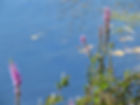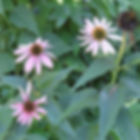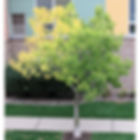Strange September Birding for Global Writing Challenge
- sallyinstpaul
- Sep 11
- 8 min read
I am fortunate to have joined a talented group of bloggers for the Global Writing Challenge. Each month, we write about a very broadly defined topic, and the responses are quite varied. The group includes Deb’s World, Marsha in the Middle, MK’s Adventures, Rosie Amber, Suzy Turner, Women Over 50 Living Well, and now me.

This month, Suzy selected the as-on-point-as-it-gets theme of September...which is something I had started writing about in a recent post:
September is a strange month! School is back in session, marking the unofficial end of summer for many people. The fashion world has turned hard core to fall clothing and outfits, urging us to shop for the cooler season. The pumpkin spice latte has returned to coffee shops, and the American football season begins.
Meteorological fall starts on September 1 so that the year can be divided into 4 equally long 3 month seasons for the purpose of record keeping/statistics. Astronomical fall starts around September 22 with the autumnal equinox. September is when many of us start thinking about and even yearning for the fall. (This is particularly true for those who live in summer-dominant climates with high temperatures routinely above 100 F during the summer. This was definitely me when I lived in Austin, TX.)
And yet...it's not really fall weather-wise in September, not even in relatively cool spots like Minnesota!
Most of September doesn't look like fall either. Here is the area below my balcony that is the center of the outdoor space that I call my "yard." The flowers that we had earlier in the summer have died off, but everything is still quite green and not fall-like in the first half of September.

Expanding out a bit to the river and trees that constitute my most-photographed balcony view, green dominates the scene. At the bottom of the image, there are some yellow grasses, and a couple of the nearer trees have started to tip their leaves in a reddish tone, but it continues to be more summer-looking than autumnal.

But there is one way in which September fits the bill of autumn...it's in the fall bird migration season! But that's partly because "fall" migration is itself a bit of a misnomer. While many bird species do start heading "south for the winter" during the fall months, long-distance migrants with a lot of miles to cover start their travels while it's still summer; for example, shorebirds start winging south in July and songbirds start moving in August. "Fall" migration basically lasts from July through November, depending on the type of bird and where they're starting from.
But if you want to talk peak migration, September is an important month! Early September to late October is the peak period of bird migration in the US. Oddly enough, it's the peak period here in Minnesota just as it is much further south in Texas and North Carolina; you'd expect an earlier peak in Minnesota because it takes birds 2-4 weeks to fly from here to Texas, but I guess with all the differences in when various species head out, the busy period remains the same across the country.
Surely migration makes for some exciting birding opportunities in September, right? Well, yes and no. It's true that there are a lot of birds on the move, but fall migration doesn't offer the same spectacular and awe-inspiring experience as spring migration does for a couple reasons.
First, the birds themselves are just not as bright and colorful in the fall. In the spring, birds (particularly males) put a lot of energy into creating their brightest colors and most elaborate feathers to impress potential mates with their evolutionary fitness for courtship and to defend their territory against rivals.
But once all that lovey-dovey stuff is over with for the season, there is no reason for birds to wear their fanciest feathers. So prior to fall migration, they replace their flashy (but at this point, worn and damaged) plumage with new, strong feathers in their much drabber basic plumage that prioritizes survival functions, such as camouflage against predators and insulation against the coming colder weather.
Unfortunately for us, the muted colors also provide camouflage against birdwatchers; these drab birds can be hard to see at all (especially in September when the leaves still cover the trees) and then hard to identify because many of their statement features are missing.
Second, birds flying south across the US can be in a very different situation compared to birds flying north. Let's consider the Central Flyway migration route. A bird leaving Minnesota toward Texas in fall is flying over land the entire distance, with a lot of different places to stop for food and rest. Birds tend to get spread out over a large area throughout the fall migration. Birds traveling north from Texas to Minnesota in the spring also get spread out.
But birds coming into the US from points south during spring migration have just traveled over water for a long distance, so when they hit the coast, they are tired and hungry. This is especially true if they have had to fight their way across the ocean during storms. A bunch of exhausted birds hitting land and just falling into the nearest trees is what creates the spectacular fall-outs of the spring season on the southern coast. Rather than spread out across a wide area, the birds can end up very concentrated in a small space. (It's amazing to see, but it's also a sad thing because for every bird that made it to land, how many drowned in the water? The life is a bird is extremely hard.)
Since I started my birdwatching adventure in Texas, I'm very cognizant of this difference between fall and spring migration.
Third, for much of the US, the weather in the spring migration period of April and May is cooler and more pleasant than it is in September, which is functionally a less warm summer rather than true fall. Looking at historical averages at the two locations I've birded the most: Austin, TX had average highs of 80-85 F for April/May compared to 90F in September; Winston-Salem, NC had average highs of 70-75 F compared to 80F. Of course, with the warming trend we're experiencing, Septembers have gotten even warmer all over the place. Minnesota is a bit different because April is still on the colder, snowier side of spring, but I do find May more comfortable than September here.
So despite September being in the peak fall migration period, I have not taken as many birding outings in this month as you might expect. Here's some data on my birding by month in the ABA (American Birding Association) area - in my case, the lower 48 states of the US. (Note that only wild birds count.)
September ranks 9th out of 12 for the number of birding days (i.e., days I recorded birds in my bird spreadsheet). Looking at my school and job history, I can see why - in grad school, it's a busy month settling into a new school year, and I started a new job twice in September. February, March, and (surprisingly) October are the lowest. December is the stand-out high month, which makes sense because I have historically traveled every Christmas, and travel means birding. The summer months also get a boost from vacation travel (though in Minnesota, I find summer birding challenging to enjoy in areas with a lot of biting insects).

For the number of bird species identified, September is also in the bottom half - 8th out of 12. Overall, there's not as much variation in how many birds I've seen by month as there was with how much birding I did.

A "life bird" is a bird that a person has identified in the wild for the first time. September is also a low month for the number of life birds I've added to my bird list - 9th of 12. I'm not surprised that April has the highest number of life birds; remember what I said above about birds coming across the water and "falling out" on the Texas coast in the spring? On one particularly amazing April day, after a storm had blown birds that usually migrate up the east coast into the middle of the country, I added a lot of new migrating songbirds to my list. July and August do well here because of vacation travel centered on visiting places with birds I hadn't seen before.

Even though my September birding has been a bit limited, I have had some great bird experiences in that month. Here are some photos from a mid-September outing I took with my husband in a location chosen for its water birds. Water birds tend to be large, sitting out in the open, and "confiding" (not to be very bothered by having people around, either because they are trusting or, more likely, preoccupied with their own activities), which make them good subjects for a novice bird photographer.
Let's see what the AI has to say about these photos:
"A white egret stands in a marshy area surrounded by tall green reeds, with sunlight creating a serene and natural setting."

"Duck with brown and blue feathers perched on a log, reflected in calm water. Sunny day, serene mood, twigs in foreground."

"A duck with brown and white feathers floats on a reflective, rippled pond surface with green hues, creating a peaceful, serene scene."

"Two ducks swim side by side on a serene blue lake. Ripples and reflections create a calm ambiance."

"Two cormorants swimming on a blue lake, one with wings slightly open. Bright sunlight sparkles on the water, creating a serene scene."

"Two grasshoppers mate on a sunlit, rocky ground. Their green and brown bodies cast a shadow, surrounded by small pebbles."

"Purple flowers bloom by a tranquil blue lake, with floating leaves and green foliage, creating a peaceful natural scene."

"Pink coneflowers with green leaves in a garden. One flower is wilted, while others bloom vibrantly under sunlight. Lush, leafy backdrop."

"One flower is wilted, while others bloom" is actually a pretty good way of thinking about September as a strange month straddling summer and fall. Summer is still hanging on in many ways, but slowly we see things change. Here is what my neighborhood looks like around the end of September:
"Tree with green-yellow leaves beside a multi-colored building. Concrete path and green grass in foreground. Calm, suburban setting."

"Bridge over a calm river with autumn trees in the background. A fence and lamp post are in the foreground, creating a peaceful scene."

"Garden with a small tree and pink flowers near a sidewalk. Grass surrounds the area, creating a neat and peaceful setting."

Check out what other bloggers have to say about September:
Debbie: She is on vacation.
Marsha: Unlike most of her friends in the Northern Hemisphere, Marsha sees September as the start of something wonderful. Maybe, in another life, she lived in Australia!
Mary Katherine: She in on vacation [I think].
Rosie: For Rosie, September has always meant endings and new beginnings.
Suzy: Suzy shares why September feels like the magical doorway into autumn, with cooler nights, cosy anticipation, and the promise of boots, rain, and Halloween delights.
Sue: She is on vacation.
Does September feel more like summer, more like fall, or somewhere in between? Are there any events/experiences that spark "start of autumn" feelings for you? Do you tend to pay attention to nature - plants, birds, animals - in some months/seasons more than others? Have you ever noticed or watched migrating birds?
Blogs I link up with are listed here.